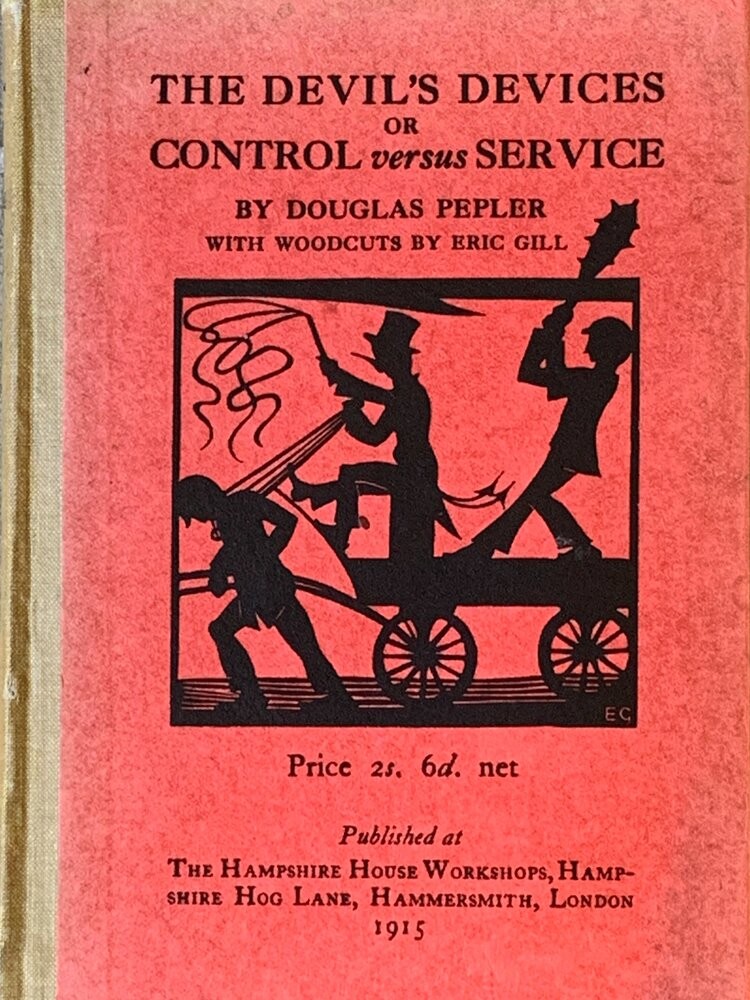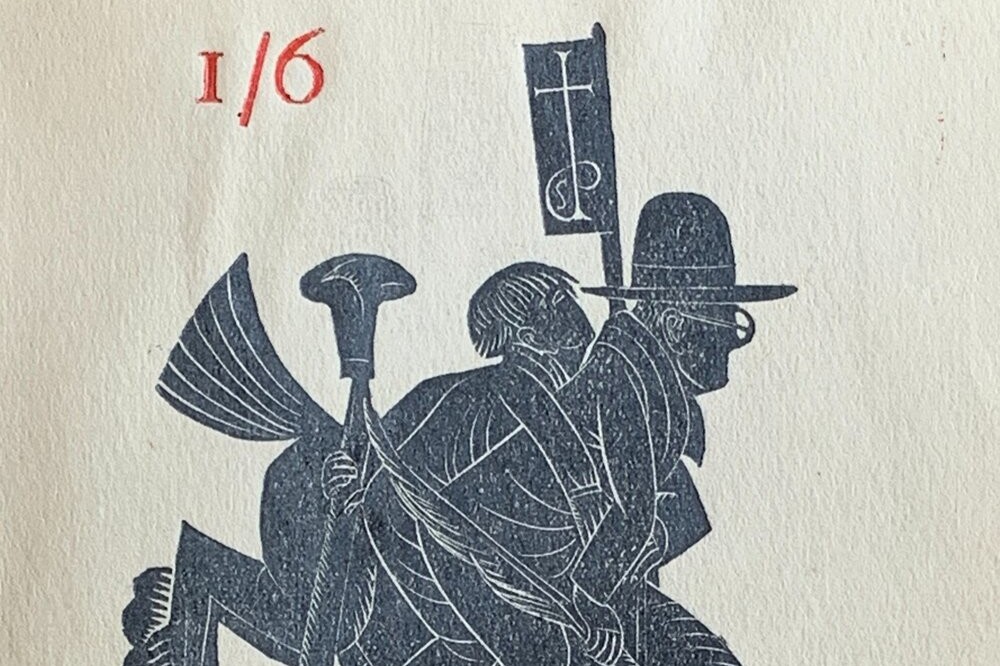
St. Dominic’s Press
The St. Dominic’s Press Collection contains over one hundred items created between 1915 and 1940 by its craftsmen. There are two aspects to this collection: fine prints that are framed for exhibition and printed materials of St. Dominic’s Press which are available for research purposes. The list of framed artwork is available in the Blackfriars art catalog. All other items are found in this catalog. Inventory numbers are those used in Michael Taylor & Brocard Sewell, Saint Dominic’s Press: a Bibliography, 1916-1937.
St. Dominic's Press was the publishing arm of the Guild of St. Joseph and St. Dominic, a group of craftsmen dedicated to the belief that ‘the principle of human responsibility being a fundamental of Catholic doctrine, and this principle involving the principles of ownership, workmen should own their tools, their workshops, and the product of their work."‘ Under the guidance of several Dominican friars, but most especially of Vincent McNabb, OP, the group followed the intellectual and spiritual rhythm of the Third Order (lay) Dominicans.
The Press was founded in 1916 by Hilary Douglas Clark Pepler (1878-1951) as a means to advance his ideas for social reform. Influenced by the Distributist movement of Hilaire Belloc and G. K. Chesterton, Pepler joined with Eric Gill (1882-1940) and Edward Johnston (1872-1944) in a move to Ditchling Commons to establish a group of working craftsmen. In 1915, Pepler began a collaboration with printer Gerard Meynell and engraver Gill and published three works under the Hampshire House Workshops impress. The Blackfriars collection has first editions of all three: Cottage Economy, A Carol and Other Rhymes, and The Devil’s Devices. After moving to Ditchling at the invitation of Gill, Pepler published a fourth work by his friend and neighbor Ethel Mariet, A Book on Vegetable Dyes (1916), and the first edition is also in this collection.
Pepler and Gill were joined soon afterwards by Desmond Chute (1895-1962), Joseph Cribb (1892-1967), who was Gill’s earliest apprentice, and David Jones. Though Gill resigned in 1924 and withdrew to Capel-y-ffin to focus on his work as a stone carver, the Guild lasted until 1989.


Explore the collection
Items in this collection include examples from all of the categories published by the Press and reflect Pepler’s social, political, and Catholic values. In addition to reprinting classical works, he published political satire, such as Libellus Lapidum (with a cover woodblock illustration by David Jones, left); works on Distributism, such as Welfare Handbooks and The Game; serious scholarly works such as Philosophy of Art (one of the first English translations of Art and Scholasticism by Jacques Maritain) and essays by Vincent McNabb, OP; and whimsical works such as the Rhyme series, and those on mimes and plays for puppets (Pepler was also a puppeteer). The holdings also contain important examples related to the life and organization of the Guild and to Christian liturgy, such as The Akathistos Hymn, How to Sing Plainchant, and An English Mass Book.
To explore the entire list in this collection type “Ditchling” into the Subject search of the book catalog.